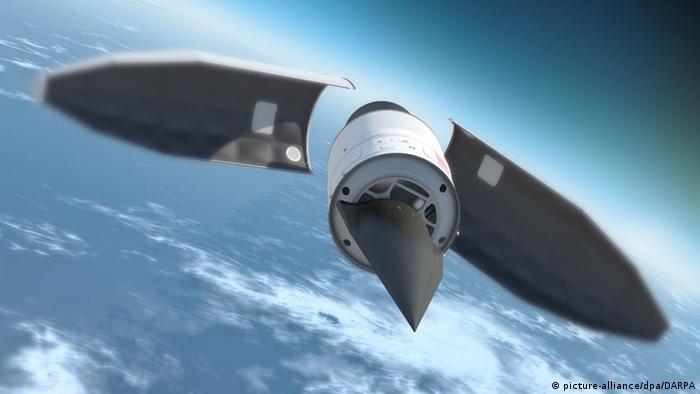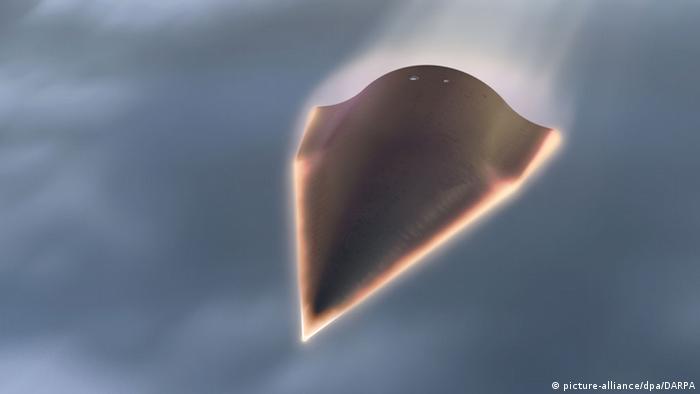Seems unlikely to be able to do "Shanghai to San Francisco in 100 minutes," but it could still be way faster than today's fastest submarines.
The Chinese are reportedly working on submarine that would ‘fly’ in an ‘air bubble’

A supercavitating submarine creates a bubble of air that encompasses the whole vehicle by ejecting gas through the nose with enough force that it forms water vapor. This greatly reduces drag and allows it to travel at high speeds not possible by standard submarines. (Sources: Defense Update, Popular Science, South China Morning Post. Graphic: Tobey – The Washington Post)
In the annals of vehicular locomotion, the submarine is the equivalent of the Walkman. It dazzled the masses when it hit, flexing nuclear-tipped missiles that completed the so-called “nuclear triad” of deterrence.
But other technologies soon surpassed it in terms of speed and agility. Now, years later, the submarine may be making a comeback — at least theoretically. Researchers at the Harbin Institute of Technology in northeast China tell the South China Morning Post that they’re hard at work on a submarine that the newspaper claims could travel the 6,100 miles from “Shanghai to San Francisco in 100 minutes.”
That’s not in the cards. But there’s plenty of reason to believe a submarine could be built that would significantly exceed the speed of today’s fastest models, which lumber along at a speed of 40 knots (about 46 mph.) It all has to do with friction and how to conquer it.
The reported plans for the super-fast Chinese submarine draw on research that reaches back to the Cold War on “supercavitation,” a technology that creates a friction-less air “bubble” around a vessel that allows it to “fly” underwater, facilitating incredible speeds. The Russians have developed torpedoes that travel faster than 230 mph using that approach.
Now researchers at Harbin’s Complex Flow and Heat Transfer Lab are reportedly figuring out how to use that science to build submarines. “We are very excited by its potential,” lead researcher Li Fengchen, a professor of fluid machinery and engineering, told the South China Morning Post. “…Our method is different from any other approach, such as vector propulsion,” which involves engine thrust. Rather, he would lubricate the vessel in a special liquid that would reduce water friction until the vessel would reach speeds high enough to enable “supercavitation.”
How could a vessel reach such high speeds in the first place? And how would it be steered? Li says the liquid membrane would navigate the vessel. “By combining liquid-membrane technology with supercavitation, we can significantly reduce the launch challenges and make cruising easier,” he told the Chinese publication.
Increasing or decreasing the liquid membrane would manipulate friction to steer the ship. The specifics of the research are being kept under wraps for now, South China Morning Post reporter Stephen Chen told the Washington Post.
“These studies in China do not go to academic papers, but the technology is being tested in the laboratory,” he wrote in an e-mail. “The scientists have received pressure from authorities due to the sensitivity of the research and they hope the matter can cool down a bit.”
The potential of supercavitation has not gone unnoticed by the U.S. Navy. “Some technologies innovations have so significant an impact on our way of doing business that they are often described as ‘disruptive technologies,’ with the potential to change the future,” said a 2002 paper published in Undersea Warfare, the official publication of the submarine force. One of them, it said, was “‘supercavitation’ techniques.”
The Defense Advanced Research Projects Agency was once reported to be doing much the same, and Popular Science says the project would have allowed the “delivery of men and material faster than ever.” That’s exactly the end game for the Chinese research team: civilian transportation — or even swimming.
新聞報導
中國研發高超音速技術,旨在改變現代戰爭格局?
中國最近試射高超音速飛行器的行動雖然失敗,但仍然引起了國際社會的廣泛關注。因為這是一種能夠改變全球軍事力量平衡的關鍵技術。如果中國成功,美國現有的導彈攔截系統將如同廢鐵。
(德國之聲中文網)香港《南華早報》本週五(8月22日)援引兩名與中國軍方有緊密關係的消息人士報導稱,中國人民解放軍第二次高超音速飛行器試驗失敗。
該報導透露,中國正在尋找用極高的速度躲避導彈防禦系統並發射核武器的方法。最新的一次發射試驗是於8月7日在距離中國山西省省會太原市大約300公里左右的某導彈和衛星發射中心進行的。消息人士向《南華早報》透露,高超音速飛行器發射不久後解體。該報曾向位於北京的國防部詢問此事,但未收到任何回复。據報導,美國五角大樓將此中國產飛行器賦予WU-14的編號。《華盛頓自由燈塔網》也曾於本週二援引一位不願意透露姓名的美國政府官員報導了中國最新試射高超音速飛行器的消息。
"用導彈打子彈"
美國華盛頓《防務新聞》周刊亞洲部負責人顏文德(Minnick Wendell)指出,高超音速飛行器史無前例,它基本上是一個能夠在極高高度,以高超音速飛行的航天器。這種航天器能夠被用作轟炸、偵查、甚至在必要的時候打擊空間目標。
更重要的是,高超音速飛行器能夠在亞軌道空間飛行,再以最高10倍於音速的速度飛向目標,時速可超過每小時12000公里。對於世界第一軍事大國美國的導彈防禦系統來說,以這種速度飛行的飛行器是無法攔截的。顏文德表示:"就好比用導彈打一顆子彈,它的速度太快了,我們根本無法將其擊落。這就是可怕的事實。"
非一日之寒
常年關注中國軍力發展的顏文德向德國之聲表示,進行此類高超音速飛行器的發射試驗,不是短時間內能夠完成的事情。這說明,中國已經於至少10年前就投入大量精力研發高超音速飛行器技術。中國也正在研發一種自帶噴氣裝置的彈頭,能夠在目標區域內隨機改變航向,躲避例如來自愛國者-3型攔截系統的點對點攻擊。
《南華早報》報導稱,美國是除中國以外世界上唯一一個擁有高超音速技術的國家。 中國首次於2014年1月成功試射了一個高超音速飛行器。同時,俄羅斯和印度也正在研發相關技術。顏文德認為,中國目前看來正在不惜一切代價開發超高速飛行器。
進攻型武器國防需要?
中國中央政府的衛星技術專家王旭東(音)向《南華早報》表態稱,開發這樣的系統是中國國防需要。王指出:中國有必要加速開發導彈發射能力,因為中國人民解放軍的武器系統比美國的防禦系統要弱,而且美國的防禦系統已經部署在世界各地。這意味著,按照當前的技術水平,中國必須從本土發射導彈,而且很容易被防禦系統攔截。而美國在各地都擁有軍事基地,可以定期的用智能手段檢測解放軍的軍事發展狀況。
王旭東坦言:"在軍事衝突中,解放軍發射的所有導彈都會在進入大氣層之前被美軍防禦系統攔截。"台北的中國高等政策研究會秘書長丁樹範(音)向《南華早報》表示,如果北京方面能夠成功的研發高超音速飛行器,美國現有的導彈防禦系統就可能會過時。屆時WU-14就會成為中國的全球打擊武器,並帶來巨大威脅,而且 可以直接向美國發起挑戰。
一位未透露身份的高超音速技術專家今年一月曾向《南華早報》表示,中國已經有超過100個來自研究機構和大學的團隊參與相關項目的研發。在顏文德看來,中國正是能用這樣的方法在經濟上"拖垮"美國。因為美國國防開支嚴重不足,所以華盛頓方面希望保持現狀,最不希望看到的就是像中國這樣的國家投身於全球軍備競賽。
作者:任琛
責編:李魚



沒有留言:
張貼留言